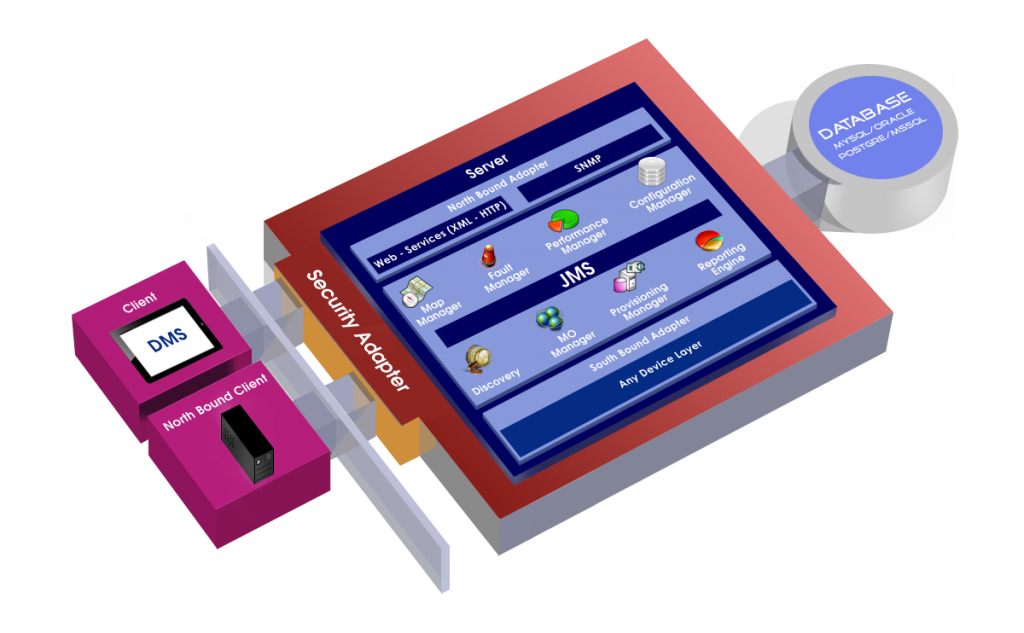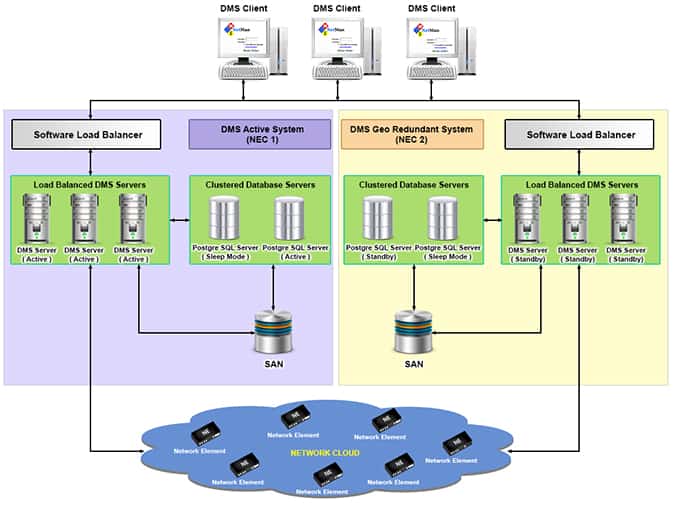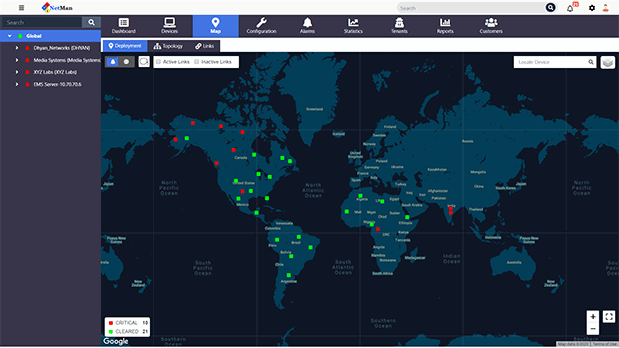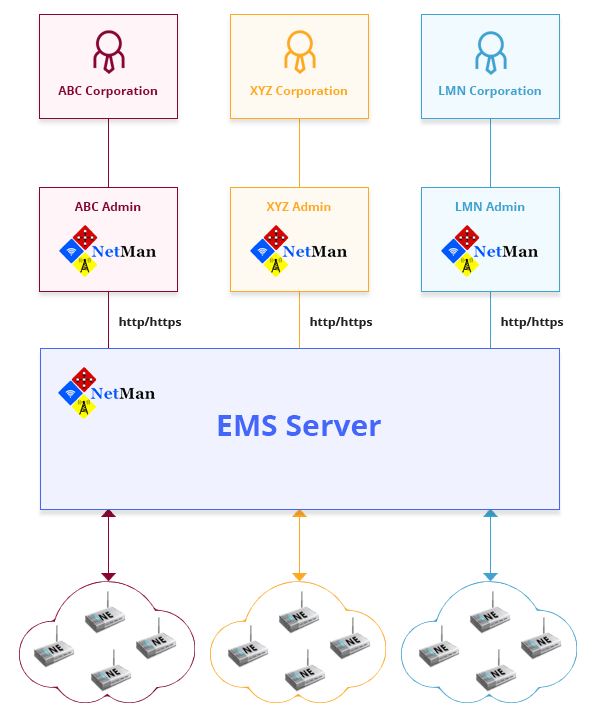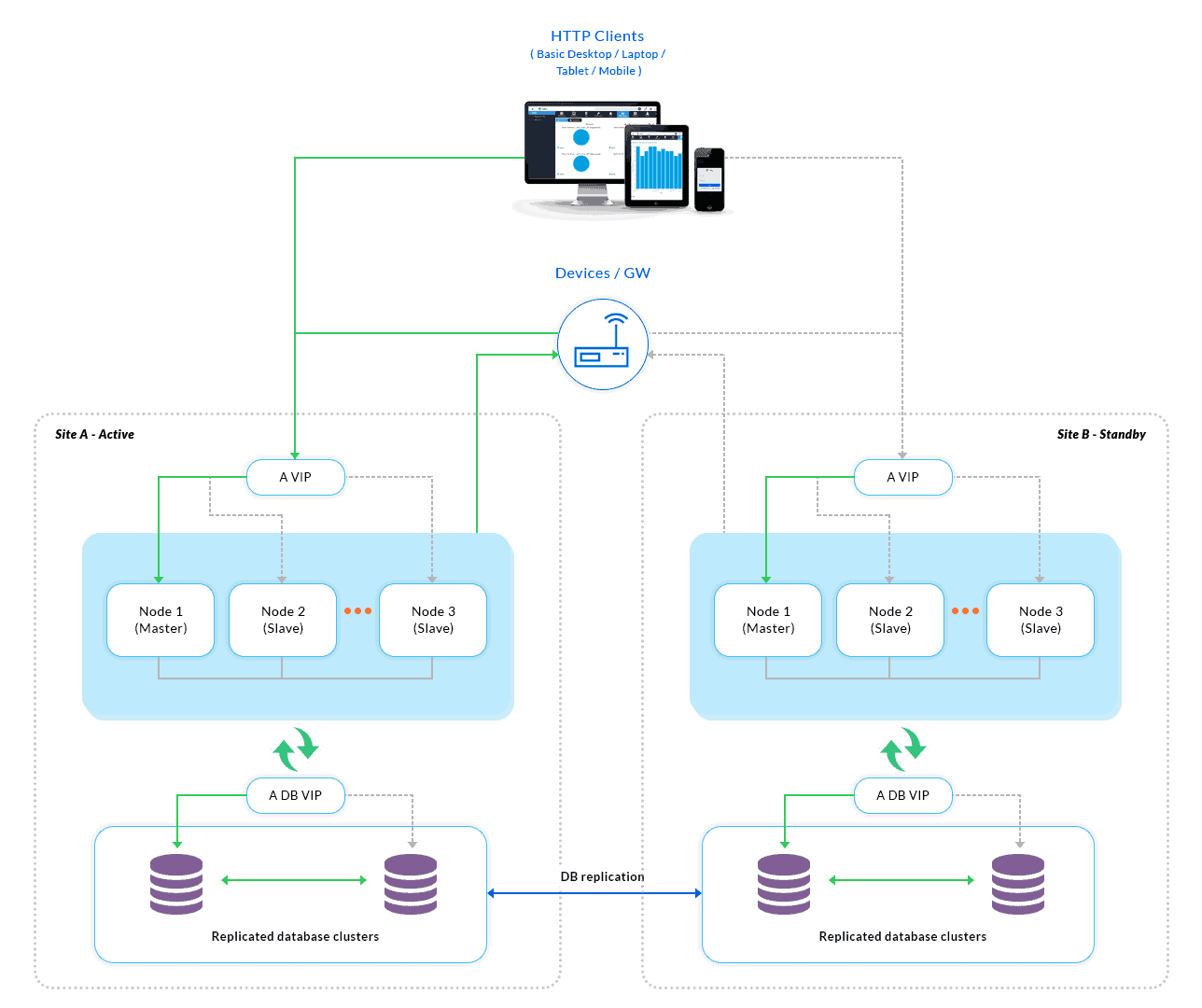Next gen Element Management System (EMS) platform to deliver your EMS to the market quickly
Dhyan Management System (DMS), the core technology that powers all our products, is a set of mature, secure and scalable components that have been continuously upgraded to monitor, manage, and control devices. DMS is very versatile, and can handle next generation devices in the 5G and IoT ecosystem.
DMS Highlights
Highly Secure
Fully Modular
Exceedingly Scalable
5G Ready
Highly Available
Easily Customizable/Maintainable
Architecture
Products Powered by DMS

Easy-to-use software to manage smart area lighting and building lighting cost effectively

Scalable and secure device management platform to manage any type of smart energy/grid asset
Technology Tour
Overview
DMS technology powers Dhyan’s Telecom/Networking and IoT products. DMS has been designed from the ground up with scalability in mind and has been deployed in environments where it is managing millions of devices. Its intuitive User Interface is extremely user-friendly and any report can be accessed within 2 or 3 clicks!
Components-based approach. Since DMS was designed using a components-based approach, it is modular. This feature allows the development of a minimal management solution for a new product that the device manufacturer would like to bring to the market, and it can be achieved quickly with low upfront investment. Additional functions and features can be added later, spreading out the overall investment.
Platform versatility. DMS is based on Java and J2EE technology. It can run on many different operating systems such as Linux and Windows. Since it is ...Multiple protocol support. On the southbound, DMS supports CoAP, SNMP, DNP3, CLI, 61850, NetFlow, NetConf, HTTP, TR-069 and ICMP. It has also been customized to support different proprietary southbound protocols. On the northbound, DMS supports SNMP, XML over HTTP, JMX, RESTful web services to communicate with NMS applications.
Responsive UI. The user interface has been designed with productivity of the operator in mind. It's based on HTML5 and can be accessed from any type of device such as laptops, desktops, tablets and mobiles. The DMS interface provides a rich user experience for operators enabling them to be highly productive. DMS also supports internationalization allowing it to be easily localized to any language.
Domain-ready platform. DMS natively supports management of various classes of device such as streetlights with TALQ, smart meters with DNP3 and 61850, IoT devices using CoAP, RAN devices using O-RAN. Since these technology stacks are already built-in, they make integration of new devices rapid and less labor intensive.
Scalability
DMS supports "Clustered" deployments to support the below.
- High Availability
- Load Balancing and Scalability
DMS supports clustered deployments for both DMS application server nodes and Database servers.
Usability
We made sure that DMS’s user experience matches the excellence of its system architecture. DMS’s elegant and unique user interface has been designed to allow access to typical data or reports in two or three clicks. The user interface was designed to support customization as part of each new Element Management System avatar that the DMS technology could morph into.
All tabs are context-sensitive. The tabs represent a list of common information or reports that an end user will utilize while at a specific location.
Another important factor in DMS's user interface is the display of data with context. Information that a user looks for is automatically filtered based on the tree and tab selection. This means that whenever someone looks at a screen, they are shown the exact path they took to reach that specific screen.
To make it easier for users to trigger or launch actions when required, DMS supports context-sensitive menus. With the flexibility to configure the menu's visibility based on the device's status, only the menus that are currently applicable will be listed. If a user prefers to do a bulk operation, such as making the same change across several network elements, they can multi-select the network elements and right-click. The menus applicable to bulk operations across the currently selected devices will be listed.
Multi-Tenancy
With the rapid acceptance of Software As A Service (SAAS), cloud-based offerings are becoming the trend for software applications. This model offers a continuous revenue stream for the vendor while providing low upfront investment costs for the vendor’s customers.
Multi-tenancy is the technical term used for offering software as a service. With multi-tenancy, a single image of DMS is hosted in the cloud. This image can be shared by multiple customers ("tenants") of the device manufacturer. As illustrated in the given figure (illustrated using NetMan product), many customers are sharing the same image of DMS, which is hosted in the cloud of the device manufacturer. The networks of the customers are fully isolated from one another and the interactions between the administrators and their networks are fully secure. DMS's multi-tenancy feature allows device manufacturers to cater to smaller customers, who don't have the resources to invest in a management system. This is made possible by offering the system as a service with very low upfront investment costs. This approach also provides the device manufacturer with a continuous revenue stream. With multi-tenancy, the device manufacturer can easily deploy any new features that are added to their management system and also institute different subscription levels.
Geo-Redundancy
DMS supports redundancy between two DMS clusters to enable Disaster Recovery. The Geo Redundancy can be setup between two identical DMS clusters. In the event of failure of the active DMS cluster, the standby redundant cluster setup can be activated to enable DMS services. The architecture of a DMS Geo-Redundancy setup is shown here.


